We 'built' the Alienware Area-51 out of Lego bricks — limited edition model only available through Alienware rewards
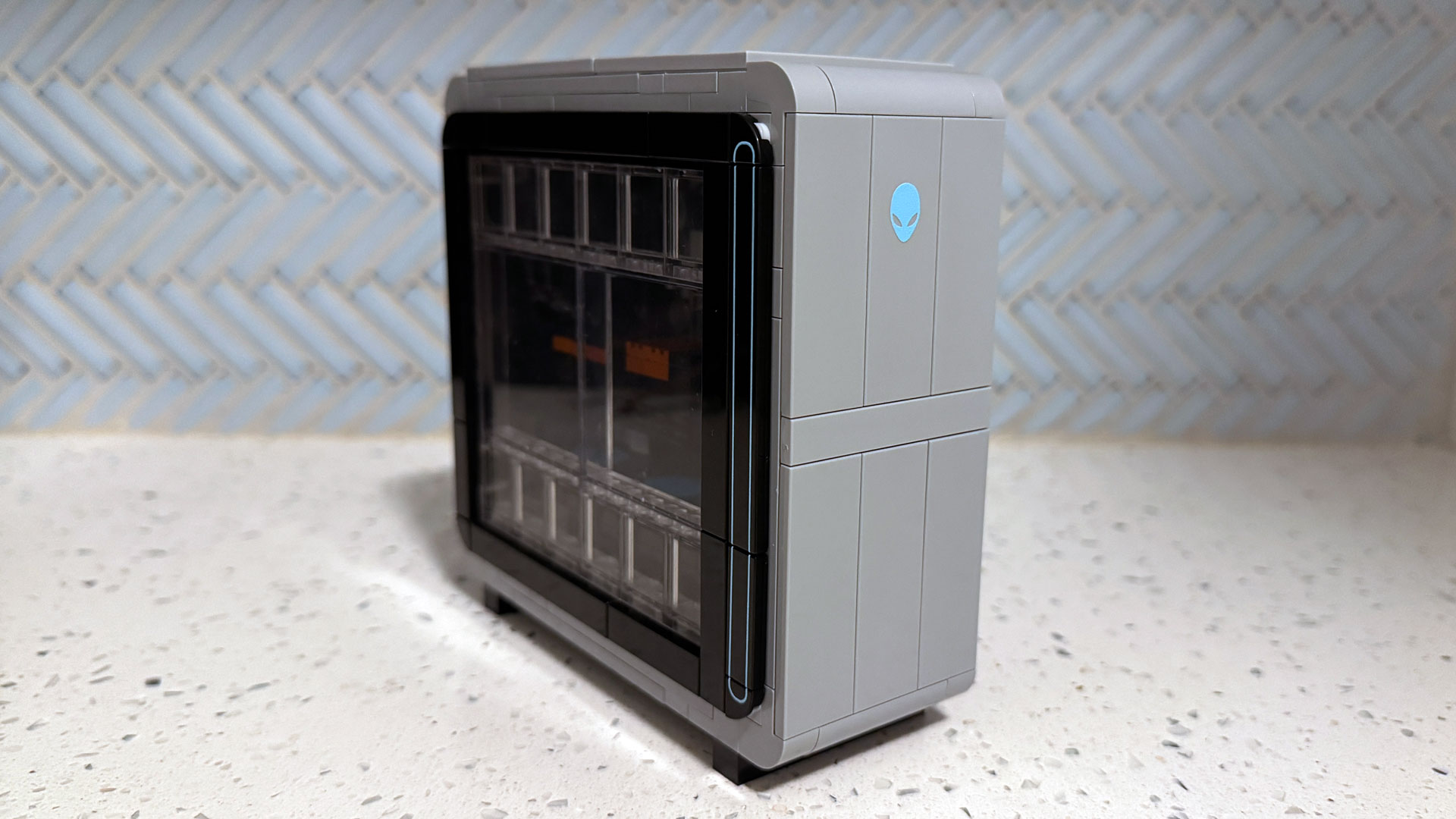
The Alienware Area-51 is a pre-built gaming PC, but we put together one on our own. Only this one isn't made of metal and components, but rather Lego bricks. The 318-piece model that we constructed is a set being doled out by Alienware to members of its Alienware Arena fan community, but we got to go hands on a kit to try. .
Usually, this kit — which uses real Lego bricks but is not at all affiliated with Lego, multiple pieces of legalese remind me — goes for 9,999 Alienware Rewards Points. Those points are earned by fans by spending time on community forums and participating in the Discord, achieving login streaks, playing partner games on Steam, competing in giveaways, and more. (Buying Alienware products doesn't earn ARP). For the purposes of this so-called PC build, Alienware just shipped us one. Some people are already trying to sell them sealed on eBay for $400 to $500, though it's unclear if anyone has bitten at that price.
What I wanted to see was just how close to the original system this kit could get, and whether or not a Lego kit could capture the fun (and stress!) of building a PC.
Pieces | 318 |
Dimensions | 5.3 x 5 x 2.2 inches (13.2 x 13 x 5.5 cm) |
RAM | Single-channel |
Price (as configured) | 9,999 Alienware Rewards Points |
Authentic Lego Bricks | Yes |
Affiliated with Lego | No |
Building the Alienware Area-51 Lego PC
The package sure looks like a Lego set, minus any branding. Inside, the instruction manual is also a pretty solid Lego knockoff, and there are 11 bags of pieces. There was also a card advertising BuildaMOC, which sells custom Lego kits and builds bespoke models for businesses.
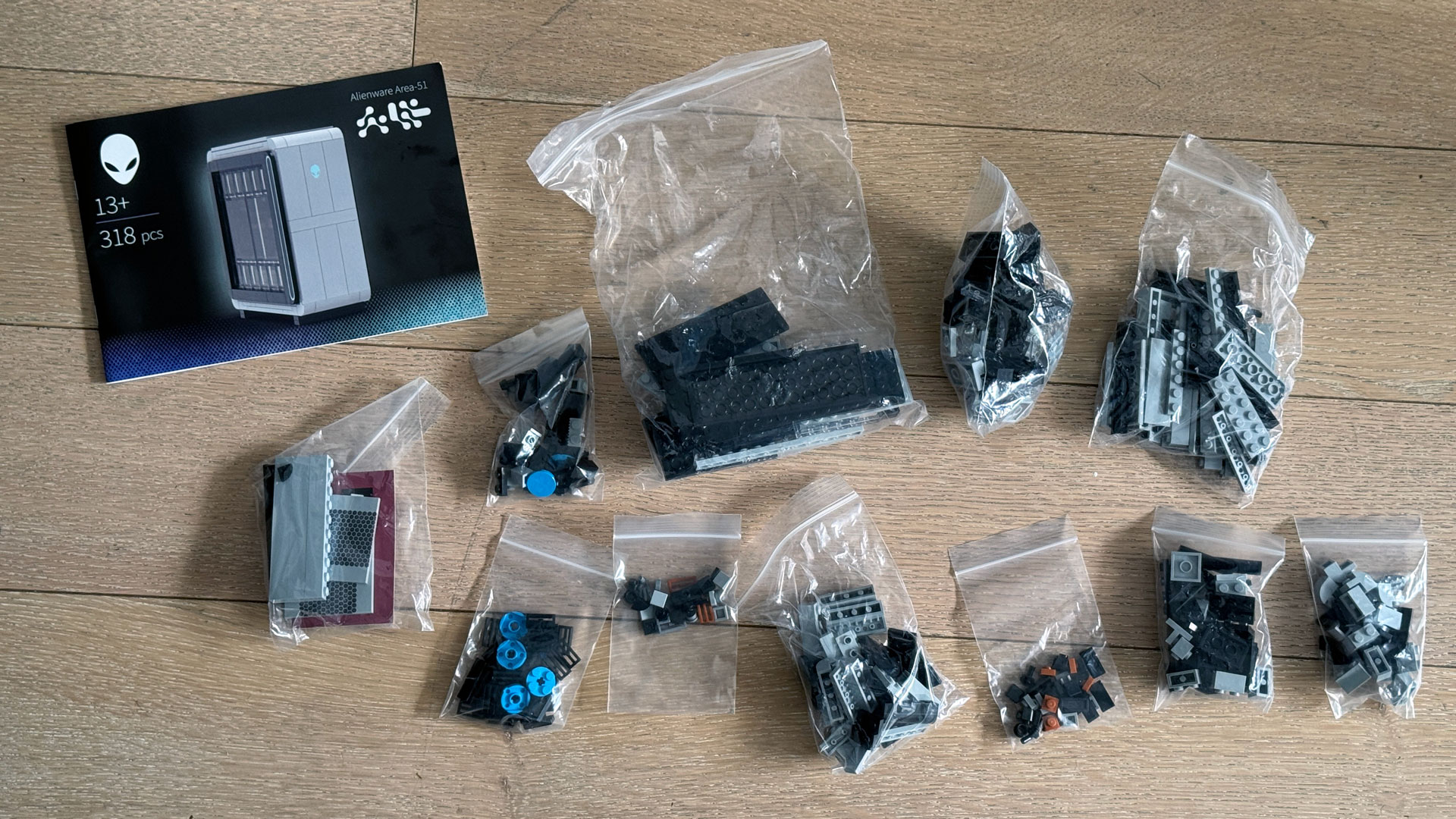
I found out quickly that I would not be building each component, then installing it. Instead, the build started with building the bottom of the case, followed by the power supply shroud and its two fans. There's a QR code on the PSU shroud, just like on the actual Area-51, which has many QR codes with instructions on upgrading parts. Here, that QR code works, and takes you to the Alienware homepage. The back of the case also features the A51 inscription. I noticed that side of the case wasn't all uniformly gray. Some of the pieces were a bit off-color.
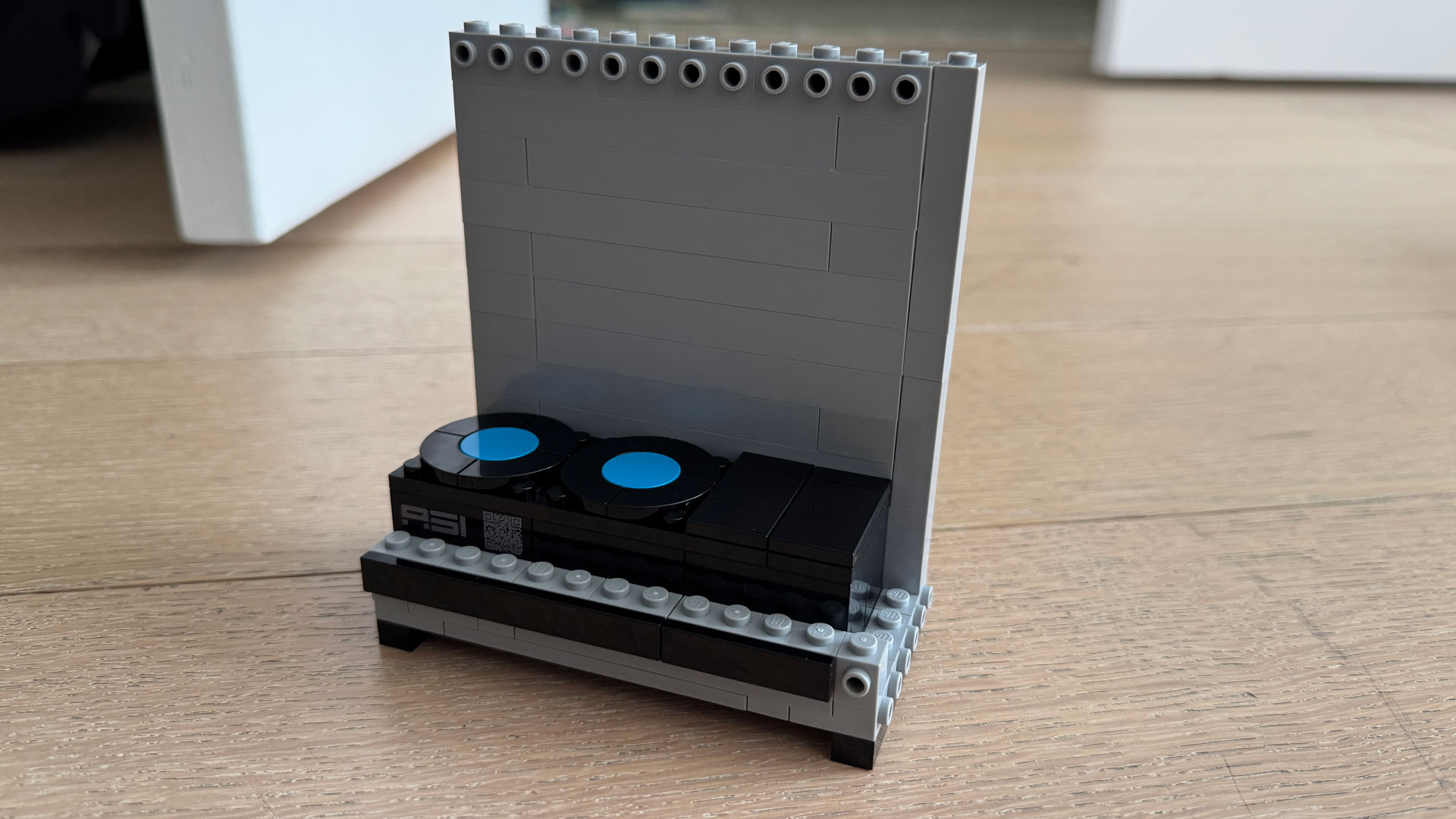
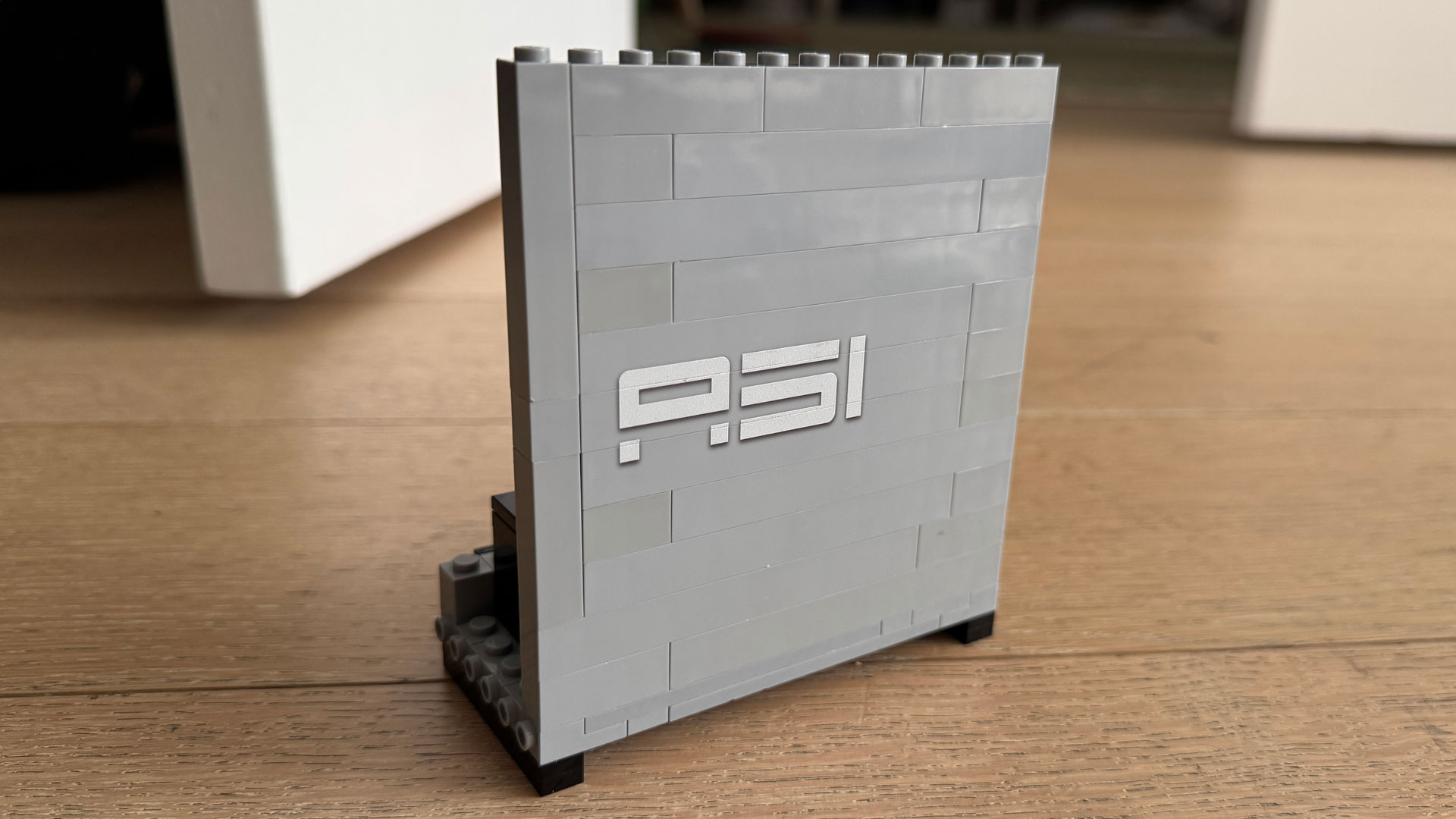
With the bottom of the case and the back wall built, you move on to the motherboard, which was easily my least favorite part of the build. I don't usually mind lots of detail work with tiny pieces, but this is where I found that the distribution of the parts in the bags sometimes didn't make a ton of sense, and I constantly switched between bags looking for the next tiny part. I would've been better off dumping it all on the floor.
There are some fun novelties on the motherboard, my personal favorite is the choice of Wolverine claws to serve as the power cables to the board. Unfortunately, there's only one RAM stick. On the one hand, this is a Lego model. On the other hand, can't that Lego model let me fantasize about the most powerful rig possible? Single-channel RAM is a no-no on any serious gaming PC.
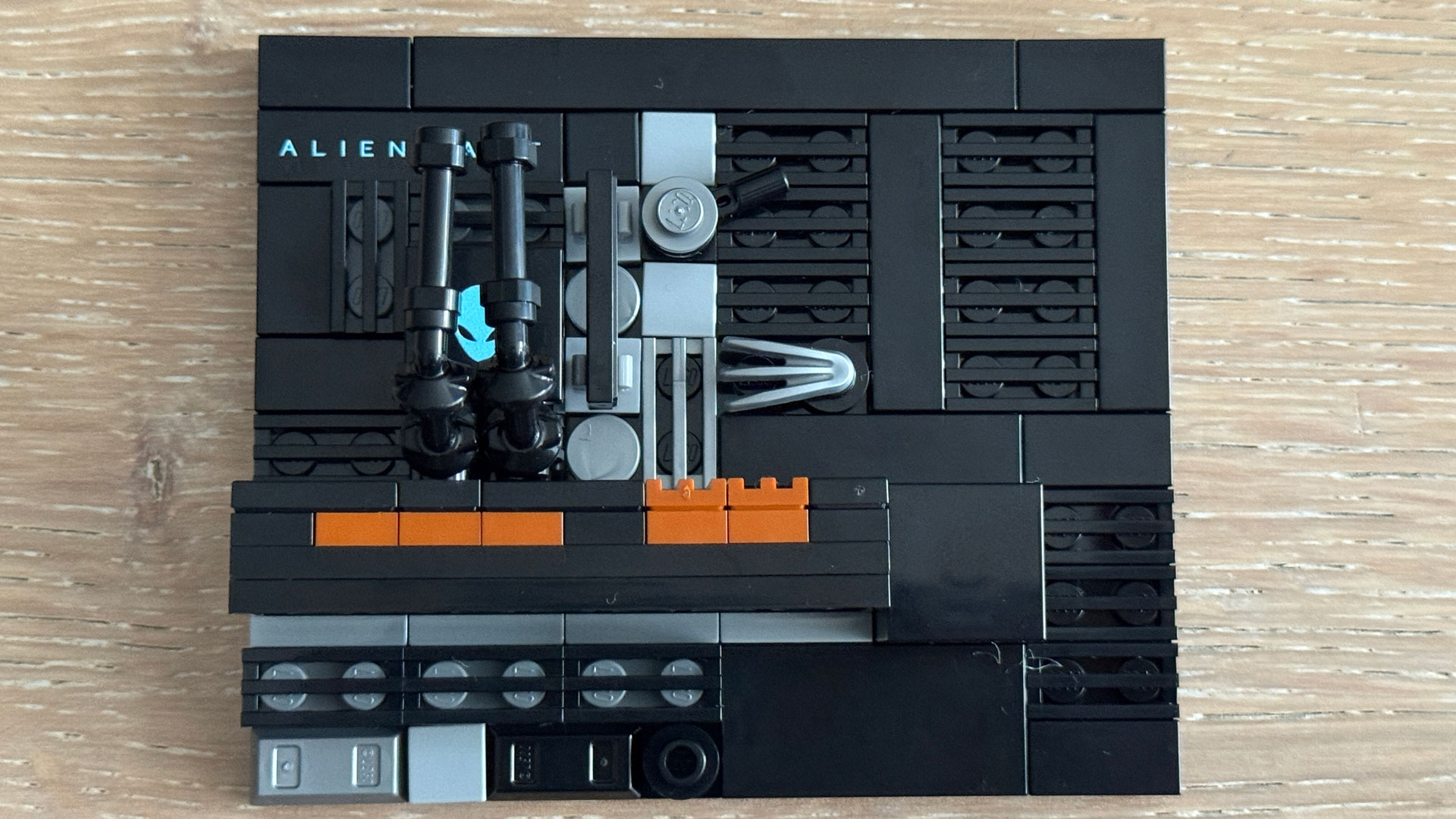
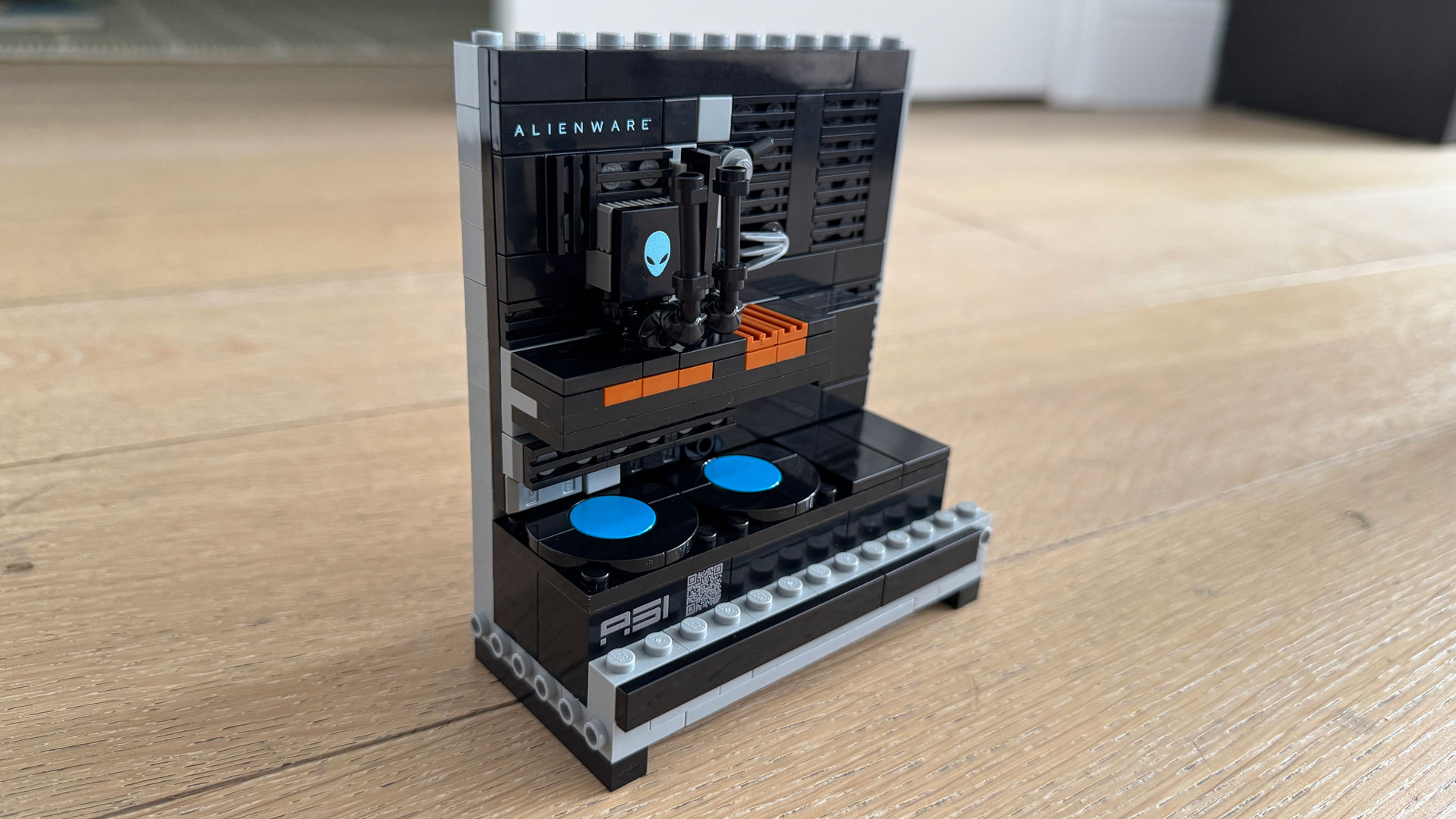
The GPU and cooler are also built onto the motherboard. No word if the graphics card is supposed to be an RTX 5090, but it's certainly cheaper. The cooler was my least favorite part, as it got knocked off several times when I was installing the next part, the case's see-through window, but eventually I got it all attached.
I feel like the case's window is a weak point. It consists of 12 small panels and two large panels. You can see into the case, but there are a lot of lines and connectors obstructing the view of the internals. This is where I think a real partnership with Lego might've helped: custom pieces probably would have been a better fit.
Get Tom's Hardware's best news and in-depth reviews, straight to your inbox.
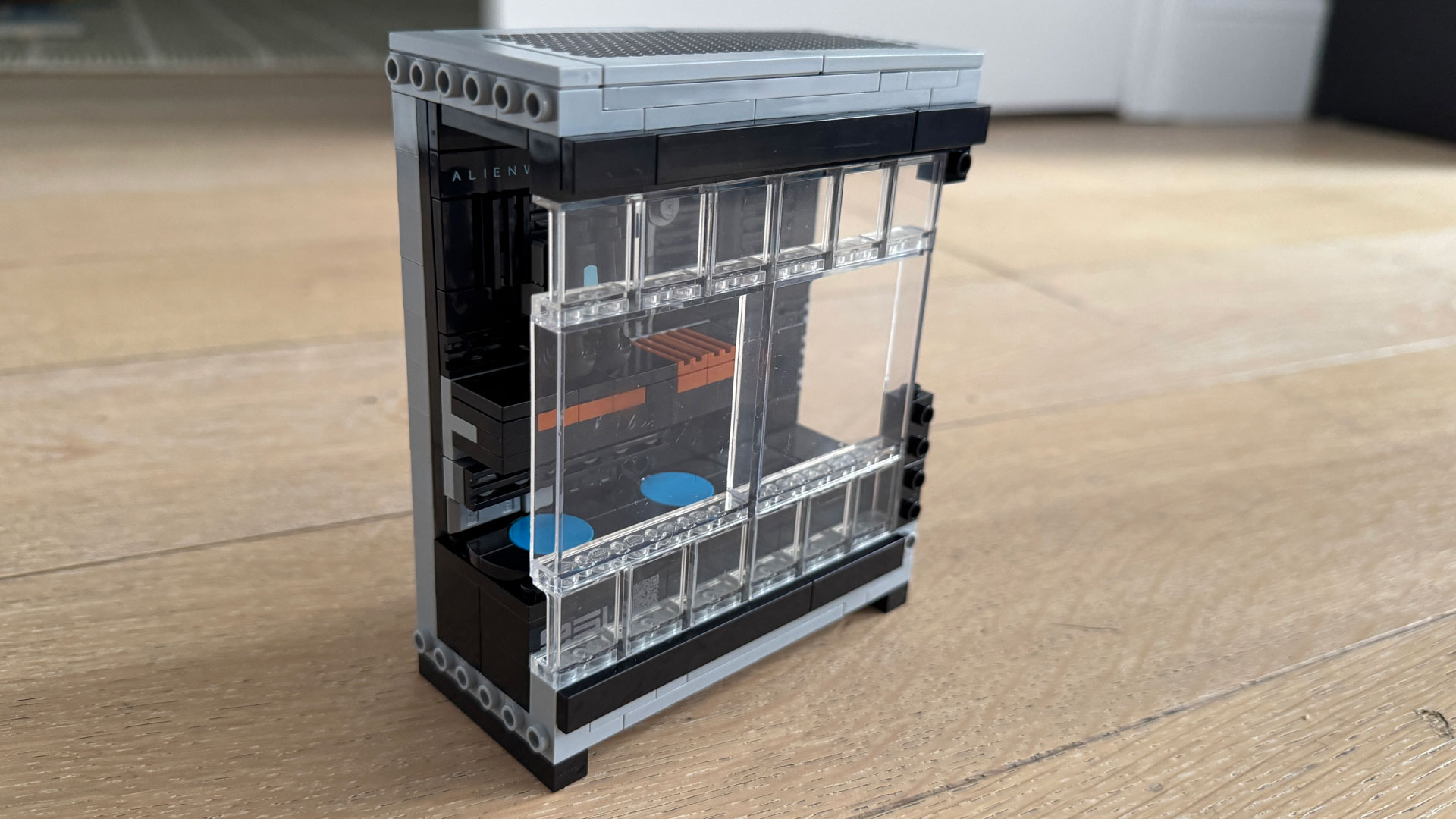
Next came the top of the case, which also includes the 360 mm radiator (good news:it has three fans). This also included customized pieces to show off the honeycomb venting and the ports on the top. This was followed by the front, including two fans and the RGB light ring, as well as the back, with a clear series of PCIe slots and the PSU.
Often, I've been left over with a few extra parts when building Lego sets. I was hoping to have an extra fan piece to put at the rear of the system. The Alienware Area-51 doesn't have a fan in the back, but I thought that, on a Lego set, I could add the rear exhaust, faithfulness to the original PC be damned. Oh well.
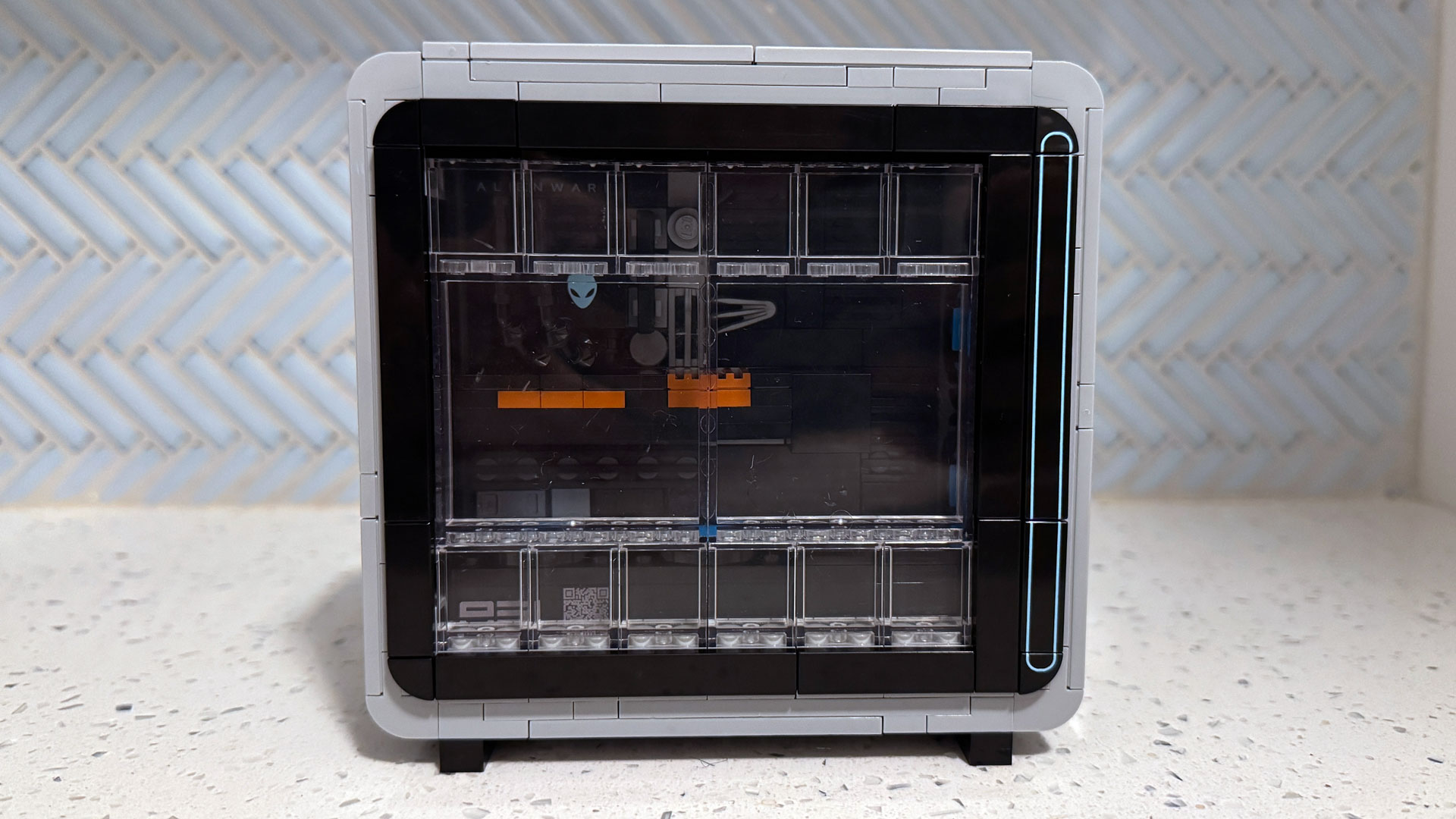
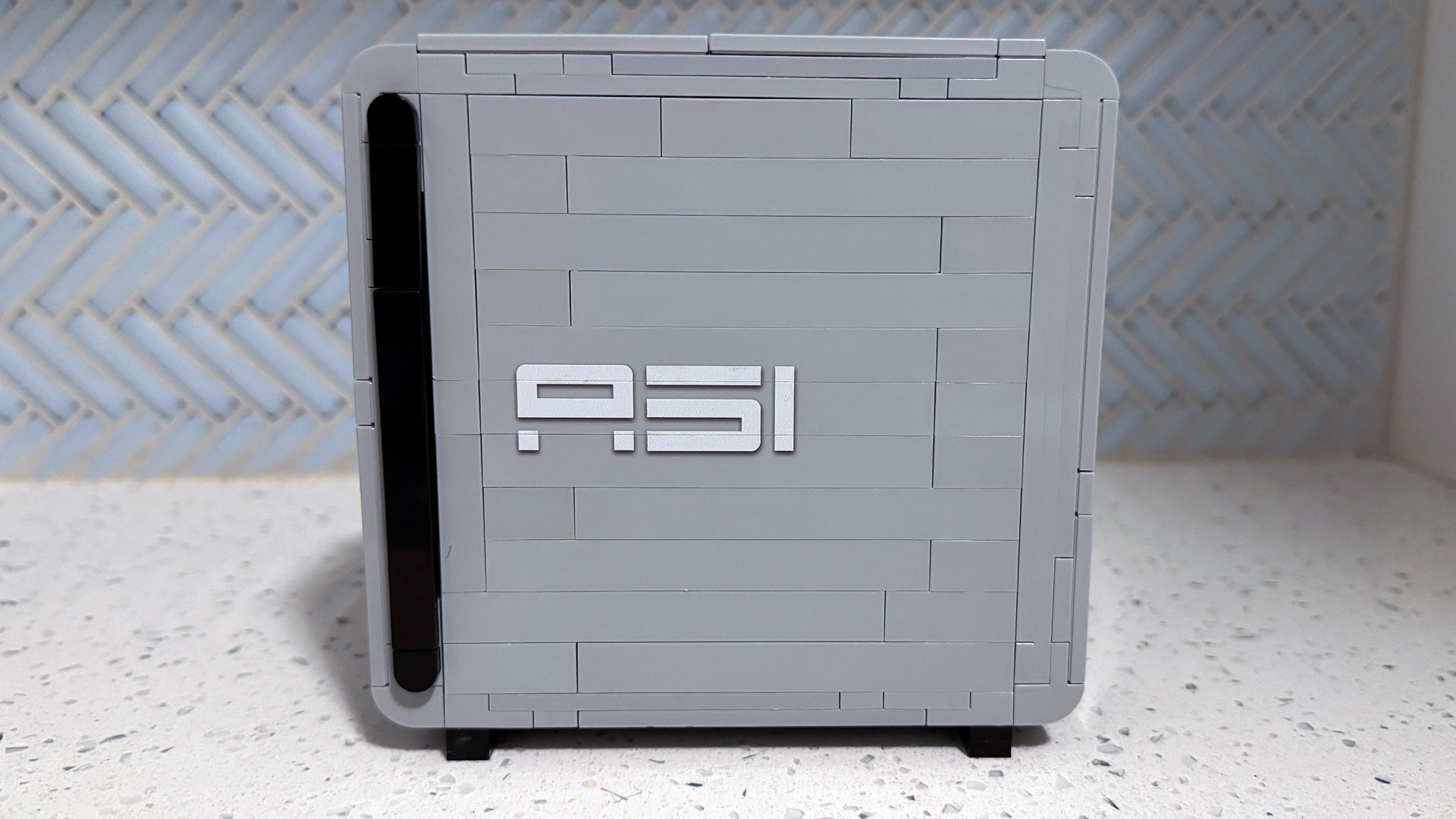
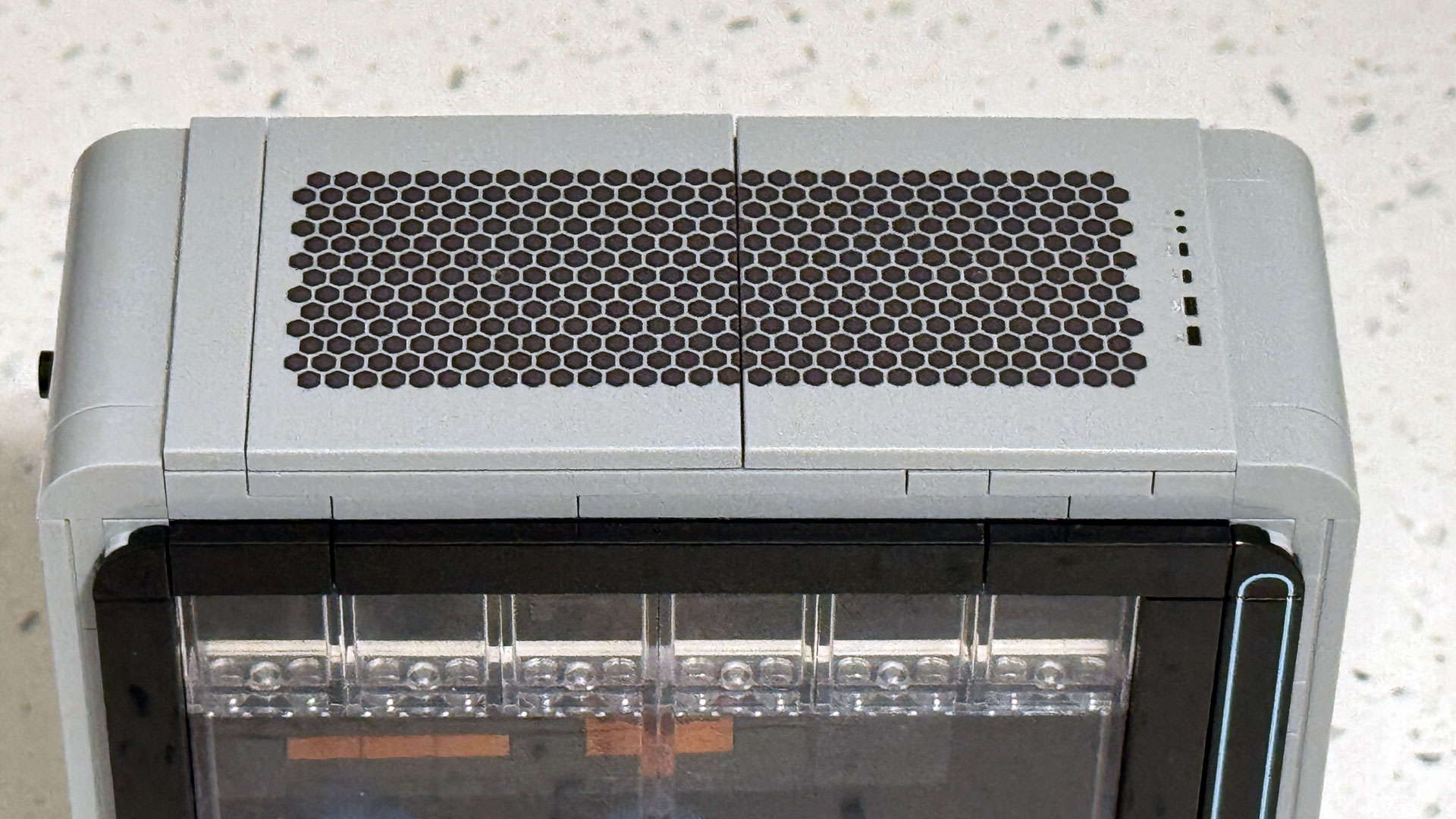
Finishing the build is the end of it. I couldn't boot the system up for benchmarking. I guess you could say that it was bricked out of the box.
Size and scale
The Area-51 is a behemoth of a desktop at 24.04 x 22.42 x 9.12 inches. The Lego set fits far more comfortably on my desk; it's 5.3 inches long, 2.2 inches wide, and 5 inches high.
The width and depth are both about 1:4.63 in scale, while the height gets a bit more lopped off at 1:4.38.
| Header Cell - Column 0 | Alienware Area-51 Brick Kit | Alienware Area-51 | Scale |
|---|---|---|---|
Height | 5 inches (13 cm) | 22.4 inches (56.9 cm) | 1 : 4.38 |
Width | 2.2 inches (5 cm) | 9.12 inches (23.16 cm) | 1 : 4.63 |
Depth | 5.3 inches (13.2 cm) | 24.04 inches (61.05 cm) | 1 : 4.63 |
If you're looking for a good idea of the size, Apple's latest Mac Mini is 5 x 5 x 2 inches — almost the exact size as this model, but with a real computer in it.
"PCs are Legos for adults"
I've often heard people describe PC building as "Legos for adults." I disagree. Lego is Lego for adults.
But PC building and Lego building do share the same satisfying feeling of putting something together methodically and being able to admire your handiwork. (OK, fine, the PC is also a bit more useful in other ways).
I'm not sure I see Alienware getting into the toy business. But I'd love to see Lego get into the PC business, making models of famous rigs. It wouldn't be far-fetched: the company already made the Atari 2600 and the Nintendo Entertainment System. It would be great to see an IBM PC Model 5150, a Bondi Blue 1998-era iMac, or even the Alienware Area-51 Predator 1 in its striking green chassis. Heck, even building a bunch of generic components and making a life-size PC would be a ton of fun for the right people. If Lego doesn't do it, maybe another one of these companies repurposing official bricks will.
Whether you're enough of a die-hard Alienware fan to save up points to get this kit is up to you — I've never been a member of a fan club. I just wish there were more chances to build PCs in this fashion.
It's fun to see a PC recreated in this way, but the Area-51 is also still new. It's not iconic yet. It makes the brick kit more novelty than trophy, but if you're spending tons of time on Alienware's website and community forums, it's probably the type of thing you'll admire.

Andrew E. Freedman is a senior editor at Tom's Hardware focusing on laptops, desktops and gaming. He also keeps up with the latest news. A lover of all things gaming and tech, his previous work has shown up in Tom's Guide, Laptop Mag, Kotaku, PCMag and Complex, among others. Follow him on Threads @FreedmanAE and BlueSky @andrewfreedman.net. You can send him tips on Signal: andrewfreedman.01